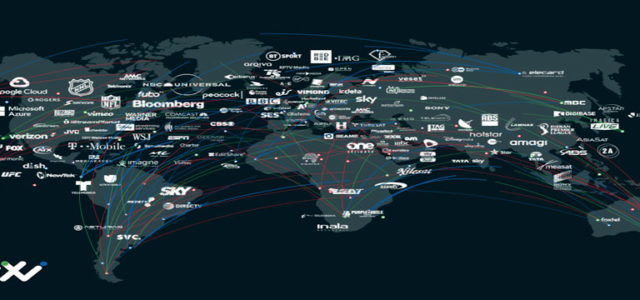

The Vislink AVDS is a bi-directional, end-to-end solution comprised of downlink transmitters, receivers, antennas and management platforms that capture real-time, seamless high-definition video from helicopters, drones and other aircraft. Vislink will also demonstrate the Quantum Receiver, which is used to reliably transport video downlinks in MilGov deployments, live streaming products that leverage bonded cellular and 5G technologies (which are now supported by AVDS), and the LinkMatrix management portal, which connects, controls and monitors all video streams. It also incorporates a 5G transceiver that may be used as part of the 5G public infrastructure to ensure low-latency, broadcast-quality transmissions. AeroLink provides bi-directional data transmission and includes an optional MANET (Mesh) component as a node in an ad-hoc system. IP-based, high-end encryption, full-duplex, real-time connectivityĪmong the key products on display will be the AeroLink Transceiver, the world’s first combination COFDM/5G/Mesh aerial downlink solution.Flexible support for COFDM, MESH and bonded cellular/5G networks.Data and video communications for airborne and ground assets.Vislink’s downlink solutions are designed to deliver actionable video ISR capabilities in the most challenging environments and fluid situations, and include: The aircraft will be on display at the APSCON event. Diamond Aircraft and Vislink partner Air Bear Tactical have been demonstrating the aircraft to law enforcement customers on a North American tour over the past month. Vislink will showcase its latest offerings in airborne downlink and surveillance solutions for use by public safety organizations including local, national and international police and military agencies.Īmong its many deployments, Vislink downlink solutions are being used in the new Diamond Aircraft DA62 MPP special mission aircraft designed for airborne surveillance. Vislink staff will be onsite in booth #807.

Olive, NJ - JVislink (Nasdaq: VISL), a global technology leader in the capture, delivery and management of high quality, live video and associated data in the media & entertainment, law enforcement and defense markets, will be exhibiting the latest generation of its Airborne Video Downlink System ( AVDS) at APSCON 2022 in Reno, NV July 27-29. Using Thunderbolt port on a monitor will automatically activate the downstream USB port(s) on most monitors and the computer can use the devices connected to the monitor, through the Thunderbolt connection.Will Display its Latest Aerial-Based Video Communications Systems for Real-Time Situational Awareness So if it is used to connect the computer with the Thunderbolt port on the monitor, then there is no need to connect the computer with the upstream USB port of your monitor with a separate USB cable. Thunderbolt ports, like USB, also carry both power and data. Thus, today, USB-C and Thunderbolt ports allow you to use a single cable between your computer and monitor to provide video signal to the monitor and also use USB ports on the monitor. In many newer monitors, the upstream USB port on the monitor is usually a USB-C port.

When you do this, the monitor will activate the other downstream USB ports and you can connect USB devices to use it with your computer. To use the USB ports on the monitor, you usually have to first connect a USB cable from your computer to the upstream USB port of the monitor. But these can't tell the computer when you connect a USB device to the monitor. The computer provides video signals to the monitor through VGA or HDMI ports and cables.

But how can your computer know when you connect something to your monitor? USB ports in monitors allow you to connect additional USB devices (like keyboard, mouse, pen drive etc.) to your computer. An upstream USB port receives power (and data) and a downstream USB port provides power (and data) to devices connected to it. There are two kinds of USB ports - upstream and downstream. USB ports carry both power and data to a device.


 0 kommentar(er)
0 kommentar(er)
